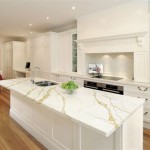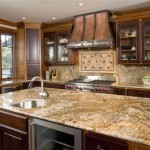Custom Size Butcher Block Countertop: A Comprehensive Guide
Butcher block countertops offer a blend of functionality, aesthetics, and warmth that appeals to many homeowners. Unlike their stone or synthetic counterparts, butcher block surfaces bring a natural element into the kitchen, providing a durable and beautiful workspace. One of the biggest advantages of butcher block is the ability to customize its size and shape, allowing it to perfectly fit any kitchen design. This article will delve into the various aspects of custom size butcher block countertops, including wood species selection, construction types, edge profiles, finishing options, and installation considerations.
Understanding the Benefits of Custom Sizing
The allure of a custom size butcher block countertop extends beyond mere aesthetics. Standardization often leads to compromises, forcing homeowners to adapt their kitchen layouts to accommodate pre-determined dimensions. Custom sizing eliminates this constraint, allowing for maximum utilization of available space and the creation of a truly unique and functional kitchen environment. A custom butcher block can perfectly fit around existing appliances, accommodate unusual angles or corners, and even serve as a focal point in an open-concept design.
Beyond spatial considerations, custom sizing allows for specific functional requirements to be addressed. A homeowner might desire an exceptionally long countertop for baking, a wider island surface for meal preparation and seating, or a thinner profile for a modern, minimalist aesthetic. These specific needs can be readily accommodated with a custom-made butcher block.
Furthermore, custom sizing can be a cost-effective solution in certain situations. While it may seem counterintuitive, purchasing a pre-fabricated countertop that doesn't quite fit and requires modifications can ultimately be more expensive than commissioning a custom-made piece. Wastage of material and the labor involved in alterations are factors to consider.
Key Considerations for Wood Species Selection
The selection of wood species is paramount when designing a custom butcher block countertop. Different wood species possess varying characteristics related to hardness, grain pattern, color, and resistance to moisture and bacteria. These characteristics directly impact the countertop's durability, aesthetic appeal, and suitability for specific applications.
Hardwoods are generally preferred for butcher block countertops due to their density and resistance to wear and tear. Maple, walnut, cherry, and oak are popular choices, each offering a distinct aesthetic. Maple is known for its light color and tight grain, making it a versatile option for various kitchen styles. Walnut boasts a rich, dark color and striking grain patterns, adding a touch of elegance and sophistication. Cherry offers a reddish-brown hue that deepens with age, while oak provides a classic and durable surface with prominent grain patterns.
The Janka hardness scale is a useful tool for comparing the relative hardness of different wood species. A higher Janka rating indicates a harder wood that is more resistant to dents and scratches. However, hardness is not the only factor to consider. Wood stability, which refers to its resistance to warping and cracking, is also crucial. Some wood species are more susceptible to moisture changes, leading to potential problems over time. Kiln-dried wood is essential for countertops as this process removes excess moisture and stabilizes the wood.
Furthermore, the intended use of the butcher block should influence the wood species selection. If the countertop will be used primarily for chopping and cutting, a harder wood like hard maple or jatoba is recommended. For countertops used mainly for food preparation and serving, a softer wood like cherry or walnut may be acceptable. It is also important to consider the potential for staining and scratching and to choose a wood species that can withstand these types of wear and tear.
Exploring Butcher Block Construction Types
The construction method employed in creating a butcher block countertop significantly impacts its stability, appearance, and overall performance. There are three primary construction types: edge grain, face grain, and end grain. Each type offers a unique set of advantages and disadvantages.
Edge grain butcher block is the most common and cost-effective type. It is constructed by gluing long, narrow strips of wood together, with the edges facing upwards. This orientation provides a durable and attractive surface that is relatively easy to maintain. Edge grain construction is suitable for general food preparation and can withstand moderate chopping and cutting.
Face grain butcher block is constructed with the wide face of the wood strips facing upwards. This orientation showcases the wood's natural grain patterns and provides a visually appealing surface. However, face grain is less durable than edge grain and end grain, as it is more susceptible to scratches and dents. Therefore, face grain butcher block is best suited for countertops that will primarily be used for food preparation and serving, rather than heavy chopping and cutting.
End grain butcher block is the most durable and aesthetically unique type. It is constructed by gluing small blocks of wood together, with the end grain facing upwards. This orientation provides a self-healing surface that can withstand heavy chopping and cutting without showing significant wear and tear. The end grain surface also provides a softer feel under the knife, making it more comfortable for prolonged use. End grain butcher block is more expensive than edge grain or face grain due to the more complex construction process and the higher material waste. It is often the preferred choice for serious cooks and professional chefs.
Customizing Edge Profiles and Finishing Options
The edge profile of a butcher block countertop adds a finishing touch and contributes to its overall aesthetic appeal. A variety of edge profiles are available, ranging from simple and understated to ornate and decorative. The choice of edge profile should complement the kitchen's design style and personal preferences.
A square edge is a simple and modern option that provides a clean, minimalist look. A bullnose edge features a rounded profile that is comfortable to the touch and reduces the risk of chipping. A beveled edge creates a subtle angle that adds a touch of sophistication. An ogee edge features a more elaborate curved profile that adds a traditional and elegant touch. The choice of edge profile also affects the perceived thickness of the countertop. A thicker edge profile can make the countertop appear more substantial, while a thinner edge profile can create a more streamlined look.
The finishing options for a butcher block countertop are crucial for protecting the wood and enhancing its natural beauty. Food-safe finishes are essential to ensure that the countertop is safe for food preparation. Mineral oil is a popular choice for butcher block countertops as it is non-toxic, odorless, and colorless. It penetrates the wood pores and helps to prevent moisture absorption and cracking. Regular application of mineral oil is necessary to maintain the wood's moisture content and prevent it from drying out.
Butcher block oils and waxes are also available, offering a blend of mineral oil and other natural ingredients that provide enhanced protection and durability. These products typically contain beeswax or carnauba wax, which create a water-resistant barrier on the surface of the wood. Polyurethane finishes are also an option, but they are less common for butcher block countertops due to their tendency to crack and peel over time. If a polyurethane finish is desired, it is important to choose a food-safe formulation and to apply it in thin, even coats.
Installation and Maintenance Considerations
The installation of a custom size butcher block countertop requires careful planning and execution. Accurate measurements are essential to ensure a proper fit. The countertop should be adequately supported by the base cabinets or island structure. Appropriate fasteners should be used to secure the countertop to the support structure. A bead of silicone caulk should be applied along the edges to prevent water from seeping between the countertop and the cabinets.
Proper maintenance is critical for preserving the beauty and longevity of a butcher block countertop. Regular cleaning with a mild soap and water solution is recommended. Avoid using harsh chemicals or abrasive cleaners, as they can damage the wood's surface. Spills should be wiped up immediately to prevent staining. Periodically re-apply mineral oil or butcher block oil to maintain the wood's moisture content and prevent it from drying out.
Minor scratches and dents can be sanded out with fine-grit sandpaper. Deeper scratches and gouges may require professional repair. If the countertop becomes heavily stained or damaged, it can be refinished by sanding down the surface and applying a new finish. With proper care and maintenance, a custom size butcher block countertop can provide a beautiful and functional workspace for many years to come.

Custom Wood Butcher Blocks

Hickory Butcher Block Any Size Quote And Order Country Mouldings

Custom Size Walnut Butcher Block Countertop Quote And Order Country Mouldings

Custom Size Beech Butcher Block Countertop Quote And Order Country Mouldings

Custom Wood Countertops Made To Order Oak City Customs

Custom Butcher Block Island Countertops For Kitchens

Reclaimed Wormy Chestnut Solid Wood Butcher Block Countertop Custom Sizes Kitchen Countertops

Custom Size Walnut Butcher Block Countertop Quote And Order Country Mouldings

Custom Black Walnut Butcher Block Counter Tops

Custom Size Beech Butcher Block Countertop Quote And Order Country Mouldings
See Also








